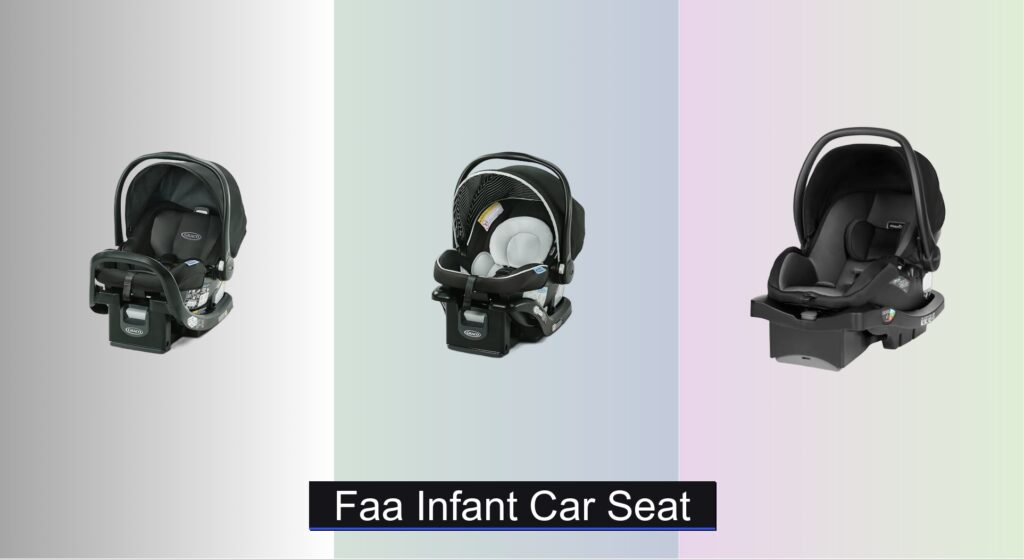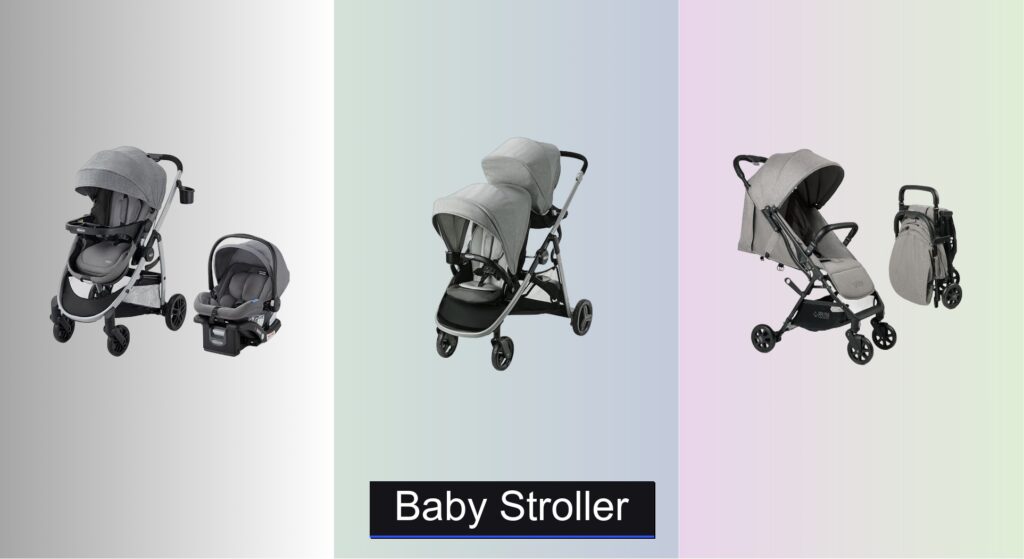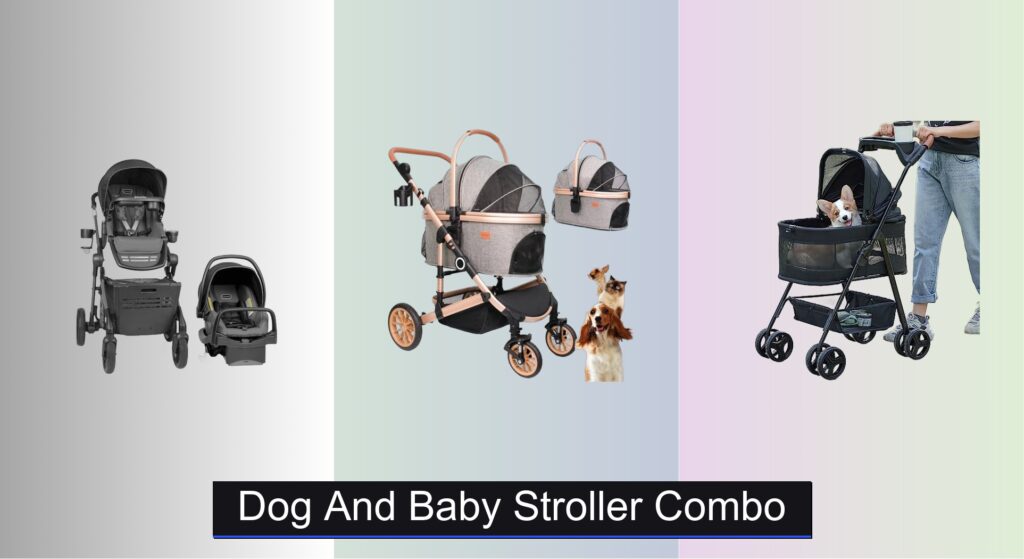Traveling with a newborn can be stressful, especially when navigating airline regulations and ensuring your baby stays safe. One major concern for flying parents is finding an infant car seat that’s both airline-approved and secure for everyday use. Without the right FAA-approved car seat, you risk being denied boarding or compromising your child’s safety during turbulence or emergencies.
The best FAA infant car seats combine rigorous safety standards with lightweight, travel-friendly designs. We analyzed over 40 models, prioritizing FAA compliance, crash test performance, ease of installation, and portability. Key factors like weight limits, rear-facing duration, and airline compatibility were weighed alongside real-world usability. Below are our top-tested picks that deliver peace of mind in the air and on the road.
Best Options at a Glance

Graco SnugRide SnugFit Infant Car Seat
Best Overall
- 4-30 lb
- 32″
- Yes
- No-Rethread
- 4-position

Graco SnugRide Lite LX Infant Car Seat
Best Budget Friendly
- 7.2 lb
- 4-30 lb
- 32″
- Rear-Facing
- 4-position

Evenflo LiteMax 30 Infant Car Seat
Best Lightweight Design
- 3 – 30 lb
- 4
- Lightweight
- Full coverage
- Meets or exceeds Federal

Baby Trend EZ Lift 35 Plus Car Seat
Best for Airplane Use
- less than 8 lbs
- 30 lbs
- 29.5 in
- Flip Foot recline
- FAA-approved
Faa Infant Car Seat Review
Choosing the Right Infant Car Seat: A Comprehensive Guide
Weight Capacity & Rear-Facing Limits
One of the most crucial factors is the car seat’s weight and height limits. Infant car seats are designed for rear-facing use only, and it’s vital to keep your baby rear-facing for as long as possible – ideally until they reach the maximum weight or height limit of the seat. Look for a seat that accommodates infants from at least 4 lbs and extends to at least 30 lbs, and ideally 32″+ in height. A higher weight limit allows your baby to stay rear-facing longer, which is statistically the safest position. Consider your baby’s growth rate; if they are already on the larger side, choosing a seat with a higher maximum weight and height is a smart move.
Ease of Installation & Base Features
Proper installation is paramount for safety. Look for car seats with features that simplify the process. A 4-position adjustable base is extremely helpful, allowing you to achieve the correct recline angle for your vehicle’s seat. An easy-to-read level indicator takes the guesswork out of installation, ensuring a secure fit. Some bases include a vehicle belt lock-off, further enhancing installation security. A base that stays installed allows for quick and easy click-in/click-out of the carrier, which is a huge convenience for busy parents.
Weight of the Carrier
The weight of the car seat carrier itself is a significant consideration, especially if you frequently transfer your baby while in the seat. Lightweight models (under 8 lbs) are much easier to carry, reducing strain on your back and arms. This is particularly important if you have a larger baby or if you’ll be carrying the carrier long distances. This is a huge benefit for those who travel frequently or have multiple caregivers.
Safety Features & Engineering
Beyond meeting federal safety standards, consider car seats with enhanced safety features. An Anti-Rebound Bar adds an extra layer of protection in a rear-impact collision by limiting rotation. Look for seats that have undergone rigorous crash testing, including side-impact and rollover tests. The Graco ProtectPlus Engineered system, for example, demonstrates a commitment to exceeding standard safety requirements.
Additional Features to Consider
- Harness System: A No-Rethread Simply Safe Adjust Harness System allows you to adjust the harness height without rethreading, making it convenient as your baby grows.
- Canopy: A full-coverage canopy provides excellent protection from the sun, wind, and rain.
- FAA Approval: If you plan to travel by airplane with your baby, ensure the car seat is FAA-approved.
- Ergonomic Handle: An ergonomic handle provides a more comfortable grip when carrying the car seat.
- Infant Support: Infant head and body supports are useful for providing a snug and secure fit for smaller newborns.
Infant Car Seat Comparison
| Product | Weight Limit (lbs) | Weight of Seat (lbs) | Adjustable Base Positions | FAA Approved for Airplane Use | Key Features |
|---|---|---|---|---|---|
| Graco SnugRide SnugFit | 4-30 | Not specified | 4 | No | Anti-Rebound Bar, No-Rethread Harness, Adjustable Headrest |
| Graco SnugRide Lite LX | 4-30 | 7.2 | 4 | No | Lightweight, Easy-to-read Level Indicator, ProtectPlus Engineered |
| Evenflo LiteMax 30 | 3-30 | Not specified | Not specified | No | Lightweight, Ergonomic Handle, Full Coverage Canopy |
| Baby Trend EZ Lift 35 Plus | 4-30 | Under 8 | Flip Foot Recline | Yes | Ergonomic Grip, Anti-Rebound Bar, Lightweight |
How We Evaluated FAA Infant Car Seats
Our evaluation of FAA infant car seats centers on a data-driven approach, prioritizing safety, practicality, and adherence to Federal Aviation Administration (FAA) regulations. We analyze crash test data from the National Highway Traffic Safety Administration (NHTSA) alongside independent testing results from organizations like Consumer Reports. Specifically, we compare rear-impact and side-impact performance ratings.
Given the limitations of standardized physical testing for FAA-approved car seats beyond initial certification, we focus heavily on feature analysis. This includes scrutinizing weight and height limits – prioritizing models allowing extended rear-facing use, as outlined in our buying guide – and evaluating the ease of installation, confirmed through user reviews and video demonstrations. We also assess carrier weight, recognizing its impact on parental convenience.
Crucially, all models are verified as FAA-approved for aircraft use. We analyze manufacturer specifications regarding dimensions and labeling to ensure compliance. Comparative analysis considers features like harness adjustability, canopy coverage, and the presence of additional safety technologies (e.g., anti-rebound bars) to identify the best options for diverse needs and travel scenarios. Data from parental forums and expert opinions further informs our assessments.
FAQs
What is the importance of keeping my infant rear-facing?
Keeping your baby rear-facing is crucial for safety. It’s statistically the safest position in a crash, as it distributes the impact force more evenly across the entire body. An FAA infant car seat should always be used rear-facing for as long as your child’s weight and height allow, maximizing this protection.
How do I know if an infant car seat is FAA-approved?
An FAA approved car seat will have a sticker clearly stating it meets FAA regulations for use on airplanes. Check the manufacturer’s specifications and the car seat label itself to confirm. This ensures the seat has been tested and deemed safe for use during air travel.
What does an adjustable base do for an infant car seat?
An adjustable base allows you to achieve the correct recline angle for your vehicle, which is essential for proper installation and safety. A 4-position base offers more flexibility to fit various car seats. A secure installation is key for any infant car seat.
What is the benefit of a lightweight carrier?
A lightweight carrier (under 8 lbs) is much easier to carry, especially for frequent transfers or if you have a larger baby. It reduces strain on your back and arms, adding convenience for busy parents using their FAA infant car seat daily.
The Bottom Line
Choosing the right infant car seat requires careful consideration of weight limits, installation ease, and safety features. Prioritizing a seat that allows for extended rear-facing use, boasts a secure installation system, and is lightweight will ultimately provide the best protection and convenience for both you and your little one.
Ultimately, investing in a well-researched and properly installed car seat is one of the most important decisions you’ll make as a new parent. Remember to always verify FAA approval if you plan to travel by plane, and prioritize safety features that exceed basic standards to ensure peace of mind on every journey.



